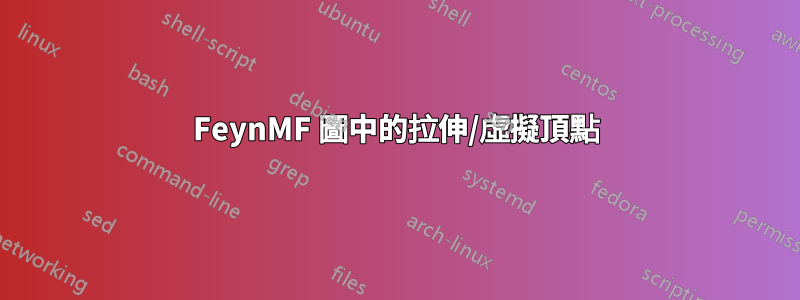
這張圖:

由以下程式碼產生:
\documentclass{article}
\usepackage{feynmp-auto}
\begin{document}
\begin{fmffile}{crazy}
\begin{fmfgraph*}(140,85)
\fmfstraight
\fmfleft{i1,i2}
\fmfright{o1,o2,o3}
\fmflabel{$\overline{d}$}{i2}
\fmflabel{$u$}{i1}
\fmf{fermion}{i1,v1}
\fmf{fermion,label=$d$,label.side=right}{v1,v2}
\fmf{fermion}{v2,i2}
\fmf{gluon,label=$g$}{v2,v3}
\fmf{fermion}{v3,o3}
\fmf{fermion}{v3,o2}
\fmf{boson}{v1,o1}
\fmflabel{$W^+$}{o1}
\fmflabel{$t$}{o2}
\fmflabel{$\overline{t}$}{o3}
\end{fmfgraph*}
\end{fmffile}
\end{document}
有人能夠解釋虛擬頂點的正確張緊/創建,以使結果具有以下形式嗎?

答案1
似乎使用它會更明智\fmfforce而不是玩弄緊張局勢。
\documentclass{article}
\usepackage{feynmp-auto}
\begin{document}
\begin{fmffile}{crazy}
\begin{fmfgraph*}(140,85)
\fmfstraight
\fmfleft{i1,i2}
\fmfright{o1,o2,o3}
\fmflabel{$\overline{d}$}{i2}
\fmflabel{$u$}{i1}
\fmf{fermion}{i1,v1}
\fmf{fermion,label=$d$,label.side=right}{v1,v2}
\fmf{fermion}{v2,i2}
\fmf{gluon,label=$g$,label.dist=10}{v3,v2} % note: different from OP
\fmf{fermion}{o3,v3} % note: different from OP
\fmf{fermion}{v3,o2}
\fmf{boson}{v1,o1}
\fmflabel{$W^+$}{o1}
\fmflabel{$t$}{o2}
\fmflabel{$\overline{t}$}{o3}
% this is the relevant code
\fmfforce{(0.3w,0.25h)}{v1}
\fmfforce{(0.3w,0.75h)}{v2}
\fmfforce{(0.65w,0.75h)}{v3}
\end{fmfgraph*}
\end{fmffile}
\end{document}



